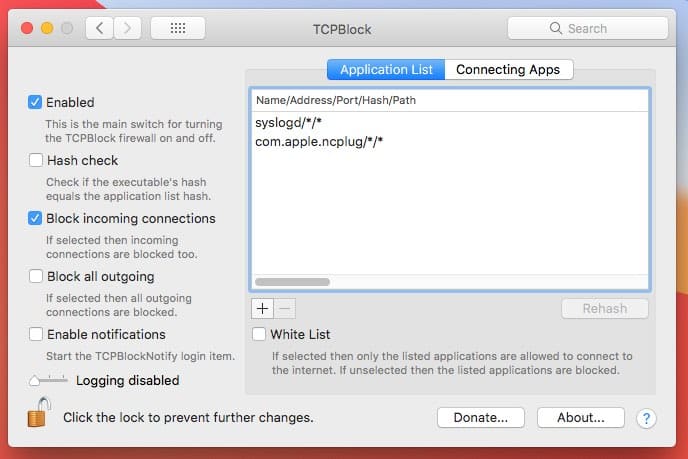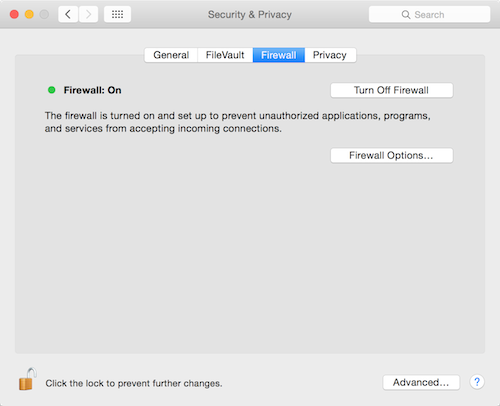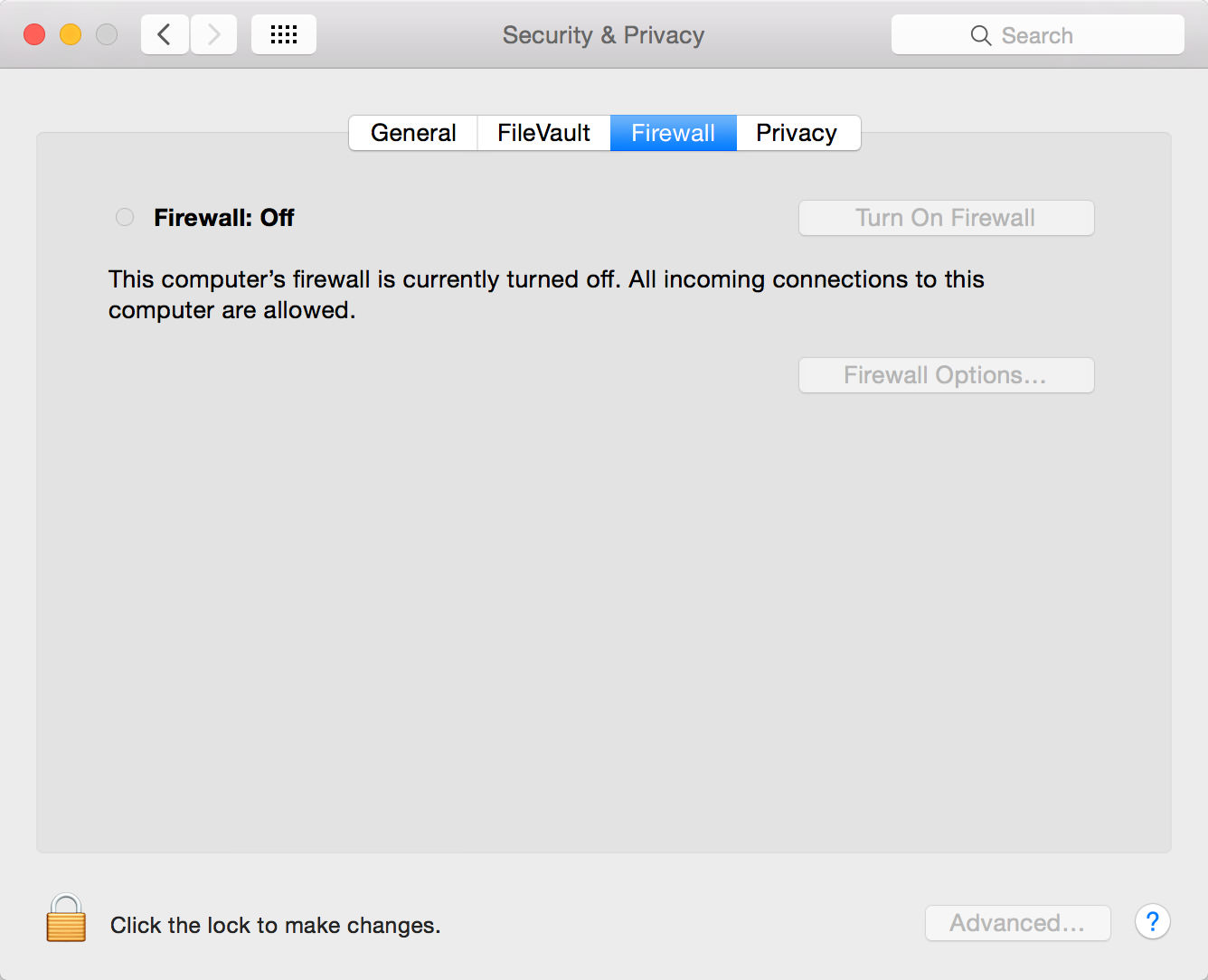

- #Mac os firewall mac os x
- #Mac os firewall mac os
- #Mac os firewall software
- #Mac os firewall password
Check out my how-to on ways to keep your Mac’s data secure for more information on VPN, along with some tips on protecting your data. A VPN, or virtual private network, is a great way to keep anyone from eavesdropping on data that passes into and out of your Mac on public networks. You should leave Block all incoming connections unchecked, too, unless all you’re doing is surfing the Web.Įnabling your Mac’s firewall and Stealth Mode are only part of the bigger picture in protecting your computer and data, especially on public networks. Click the '+' button to add an application to configure settings for. Click on 'Firewall options' to make changes.
#Mac os firewall password
Click on the Firewall tab - click the lock and enter your password to make changes to the firewall.
#Mac os firewall mac os
Leave those checked unless you know what you’re doing and plan to manage app network access manually. Follow these steps to configure your firewall on Mac OS X: Open up your System Preferences (Apple -> System Preferences). Those settings let the apps you already have communicate through the firewall without you having to take any extra steps.
#Mac os firewall software
It’s below the button for turning the firewall on and off.Ĭlick the Firewall Options button to find the Stealth Mode settingĪutomatically allow built-in software to receive incoming connections and Automatically allow downloaded signed software to receive incoming connections should already be checked. Every time you request information from the Internet, such as a web page or email message, your Mac sends data packets to request the information. But what is a firewall, and why do you need to use it on your Mac Firewall Crash Course.

Go to Security & Privacy to enable your Mac’s built-in firewall Every Mac ships with a built-in firewall a service that can be configured to disallow information from entering your Mac. You may have to click the padlock icon and authenticate with your Mac’s password to change the setting. If the firewall is active you’ll see a green dot and “Firewall: On.” If not, click Turn Firewall On.You will find it in the Sharing control panel of System Preferences.First, you need to make sure your Mac’s firewall is enabled. The first step is to locate the Firewall controls. We can add our own ports, and even specify a range or series of ports. You might also have specific applications, such as iChat, that use ports not included with the default OS X install. These "built-in" services cannot have their settings changed, and also cannot be deleted. OS X will not allow those ports until Personal File Sharing is enabled.

For example, Apple File Protocol (AFP), used for file sharing between Macs, uses ports 548 and 427. To increase security, ports that have a corresponding service in the Services tab of the Sharing control panel cannot be allowed until that service is enabled. OS X includes a number of default ports for things such as viewing web sites (port 80), SSH (port 22), and many others. When you set up your firewall, you need to decide which ports you will need to keep open. OS X's implementation allows you to close the largest number of potentials entries with the least amount of setup. This is different from some firewall products, which by default allow all ports and restrict certain ports. Mac OS X's firewall works by allowing certain ports to open. By limiting the amount and type of traffic that is allowed to pass on your computer, you can eliminate many of these methods. The main purpose of this is to stop hackers from gaining entry into your computer through various connection methods. A firewall is a software (or hardware) intermediary that screens incoming and outgoing network traffic.
#Mac os firewall mac os x
Mac OS X includes the ability to enable a firewall on your computer. This FAQ has instructions and graphics relevant for OS X versions 10.0 10.1.x 10.2.x 10.3.x and 10.4.x ONLY.


 0 kommentar(er)
0 kommentar(er)
